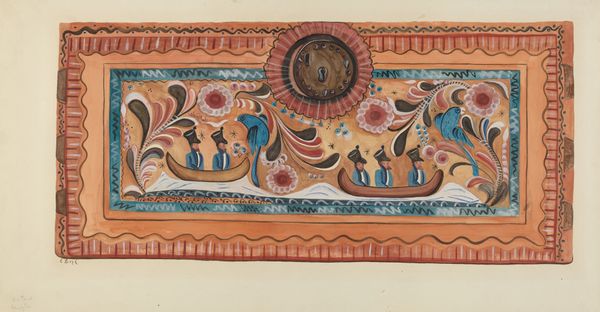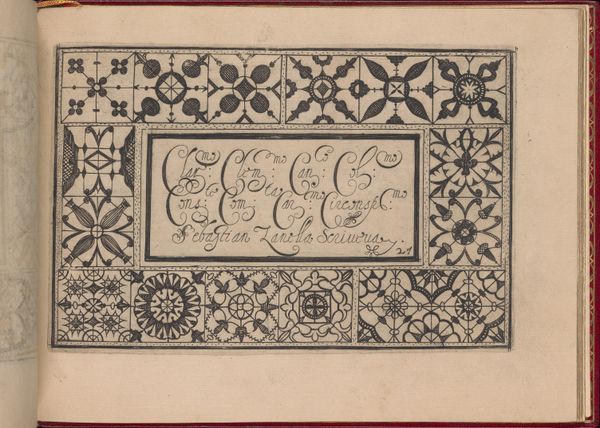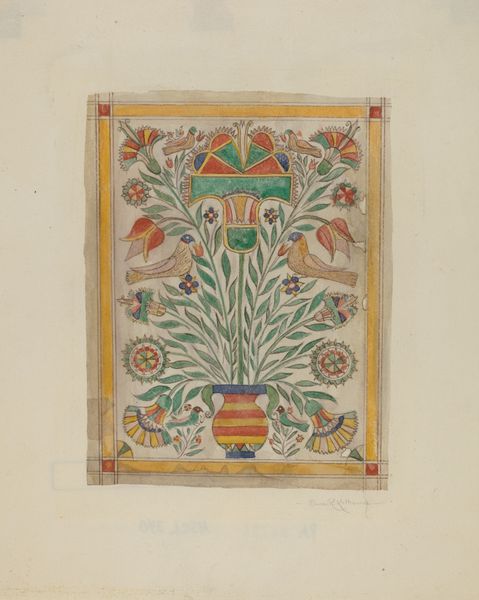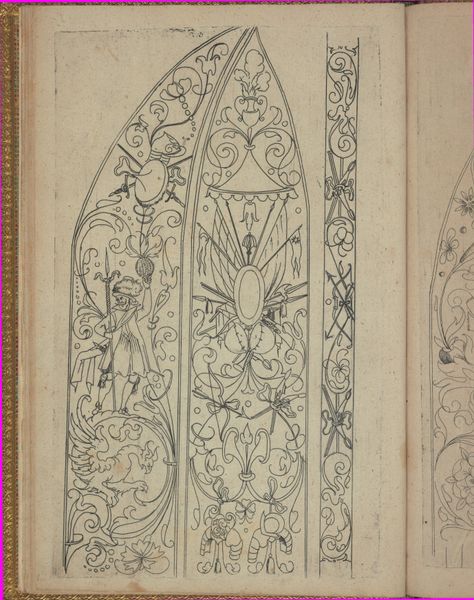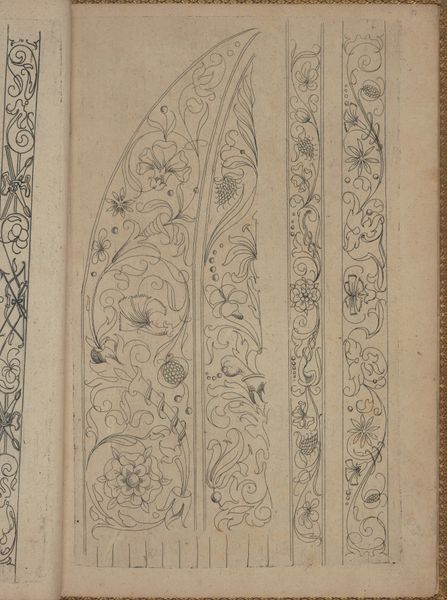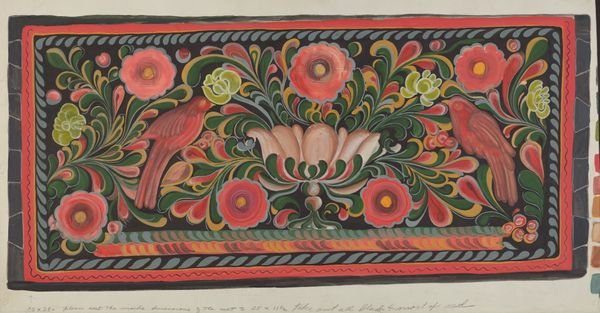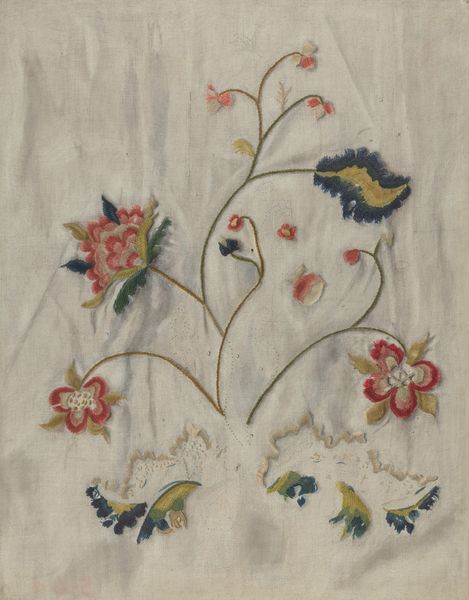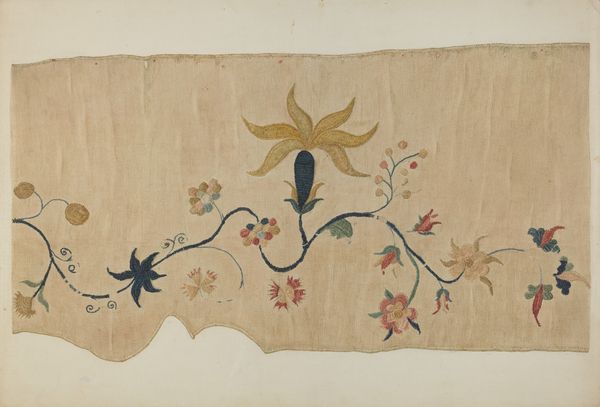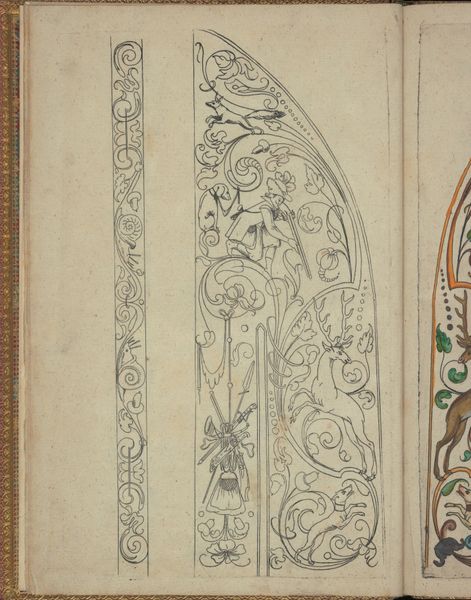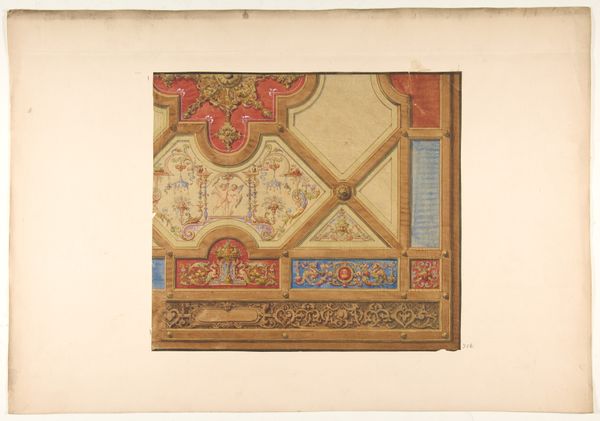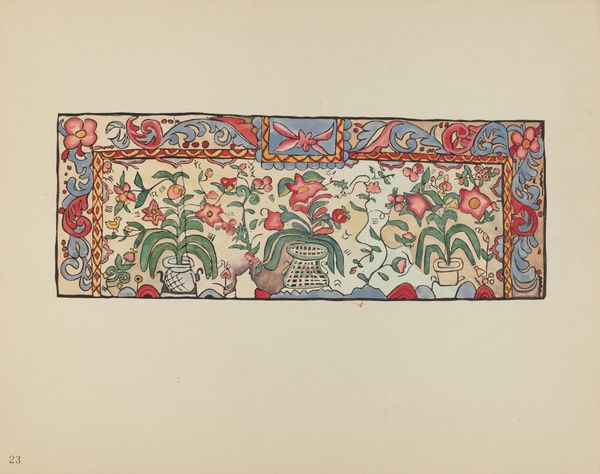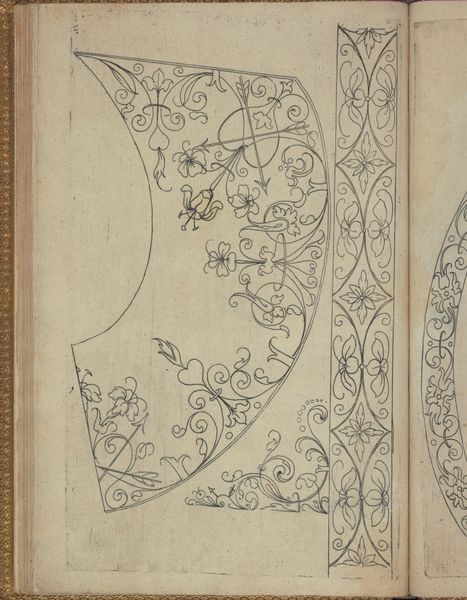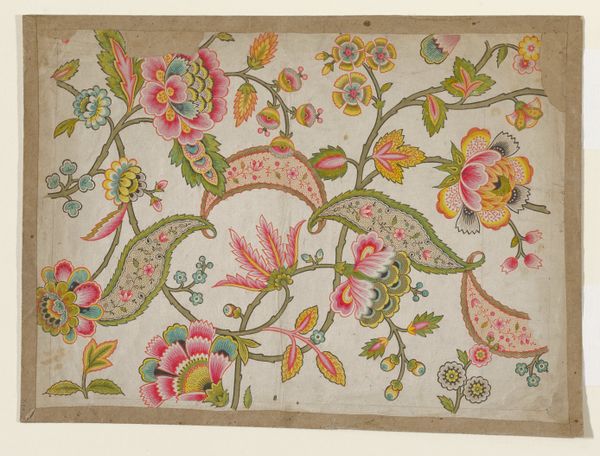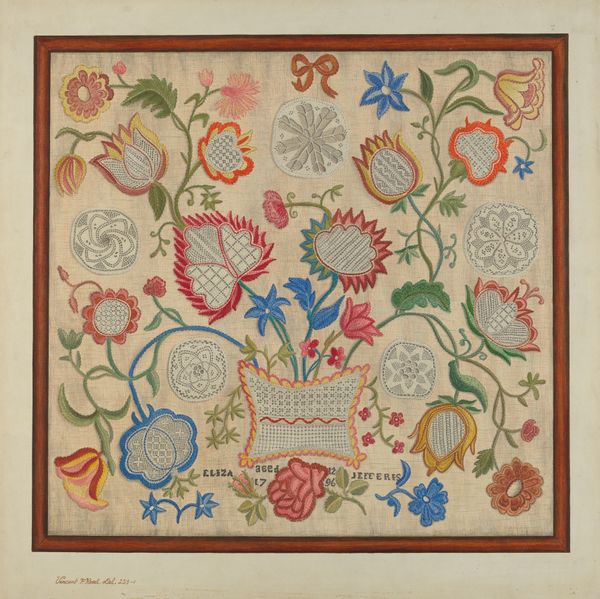
drawing, coloured-pencil, paper
#
drawing
#
coloured-pencil
#
paper
#
coloured pencil
#
folk-art
#
geometric
#
decorative-art
#
regionalism
Dimensions: overall: 29.3 x 37 cm (11 9/16 x 14 9/16 in.)
Copyright: National Gallery of Art: CC0 1.0
Curator: Here we have a drawing titled "Pa. German Love Chest," created between 1935 and 1942 using colored pencils on paper. The piece depicts the facade of, well, a Pennsylvania German love chest. Editor: Immediately, I notice how flat it feels. The muted palette of pale yellows, pinks, and greens evokes a kind of dreamlike nostalgia, almost like a memory fading at the edges. Curator: The chest itself is a fascinating example of folk art tradition brought to America by German immigrants, becoming particularly popular in the 18th and 19th centuries. These chests, often dowry chests, were intricately decorated and presented to young women before marriage. The tradition really speaks to ideas of domesticity and womanhood during the time. Editor: Exactly, and in looking at this drawing through that lens, the hearts, tulips and stylized rosettes aren’t just decorative elements; they're charged symbols of fertility, love, and new beginnings. The geometric design with the initials inscribed further underscores that these are deeply personal and meaningful objects. The artist chose a folksy subject during the 30’s. Why? Curator: Possibly for cultural preservation and promotion. During that time, we see a rise in Regionalism. Artists are looking inward and focusing on local traditions as an antidote to growing industrialization and perhaps the trauma of the Depression. Showcasing “authentic” American experiences like those of the Pennsylvania Germans provided a kind of cultural security blanket during rapid social change. There may also be, here, an interest in Americana; with nation-building impulses as an undercurrent. Editor: So it’s interesting. What was considered simply functional or folk, then, now functions in this artwork as something that is highly self-conscious, almost political, even in its apparent innocence. This drawing reminds us of the stories embedded in everyday objects and of art's potential to celebrate—or critique—those histories. I do think these chests, while they visually spoke to tradition, were in real-time contributing to patriarchal lineage and legacies. Curator: I think your interpretation beautifully showcases how we can view these folk objects not just as quaint relics but as important pieces of cultural history that tell complex stories. They reflect a society grappling with its identity during a turbulent era. Editor: Absolutely. Examining those tensions and using artworks to spark broader dialogues on these narratives—that’s really where the power lies for me.
Comments
No comments
Be the first to comment and join the conversation on the ultimate creative platform.
